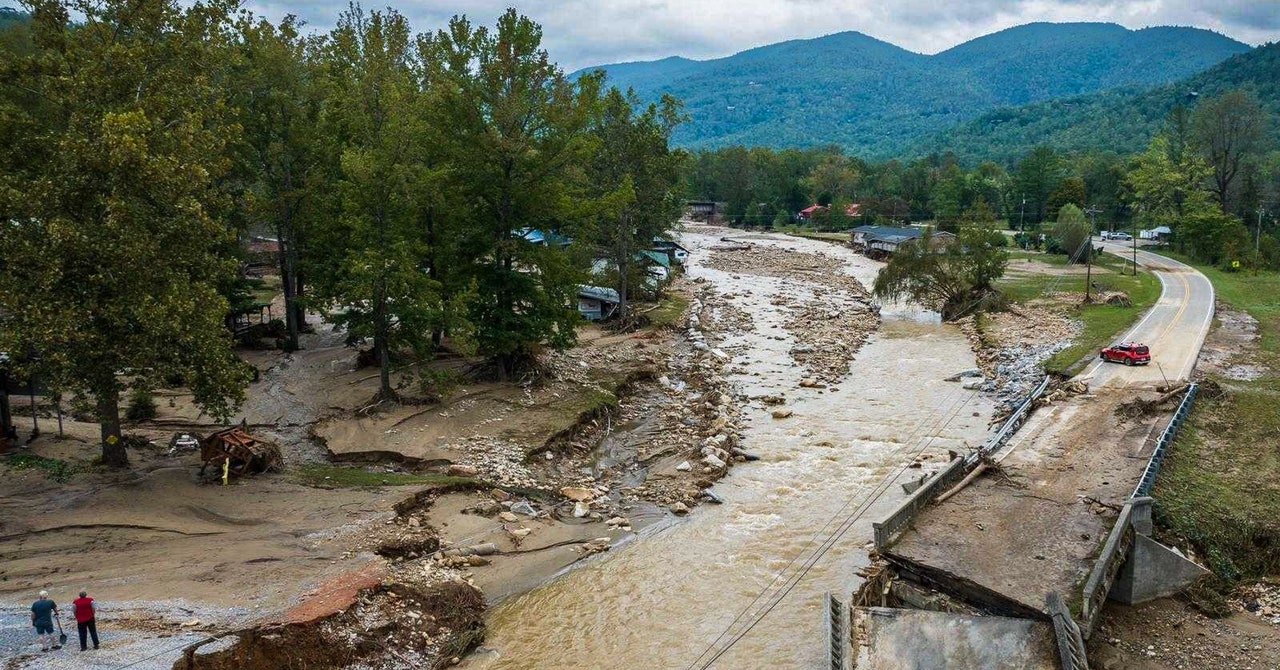
Usually, Muench says, the answer isn’t one thing too sophisticated: Simply construct infrastructure greater. However engineers can’t construct roads and bridges to outlive each disaster, which might result in costly, overbuilt initiatives that might “take generations to complete,” says Muench.
‘Rice Krispie’ Roads
When engineers are rebuilding roads from scratch, they’ve additionally began to make use of completely different supplies to account for the potential for a number of water arriving actually rapidly. Up to now decade, highway builders have more and more put in extra permeable, “spongy” roads.
Pervious concrete, not like common concrete, often excludes sand from the everyday “gravel, sand, cement, water” recipe. It additionally has a decrease water-to-cement ratio, which creates a thick paste earlier than it dries. “It’s like caramel popcorn, or a Rice Krispie bar,” says Nara Almeida, who research the fabric as an assistant educating professor within the civil engineering program on the College of Washington Tacoma.
On regular concrete roads, water swimming pools and collects, with the stagnant water finally damaging its numerous layers, and particularly important underlying ones, which bear autos’ heavy hundreds. However the elevated porosity of pervious concrete permits water to movement by way of the fabric extra simply, so it will probably attain and be absorbed into the bottom—a pleasant characteristic for roads topic to a number of wetness.
Pervious concrete does have its downsides. It’s weaker than regular concrete, which suggests it’s a greater match for sidewalks, parking heaps, and low-traffic streets than interstates that anticipate quite a lot of heavy vans. (Research into reinforcing the fabric with metal, pure, glass, and artificial fibers is ongoing.) Its porosity means it’s not a fantastic match for chilly climates, the place water can seep in, freeze, and break down the fabric inside. The concrete additionally wants common strain washing or vacuuming, to “unclog” it from the form of materials typically discovered on the roadway—mud, leaves. As a result of states generally have to change distributors and processes to make use of the newer materials, the initiatives may cost them extra. However some locations have put the fabric on the shoulders of interstates, says Almeida, that are a lot much less more likely to get common tire poundings.
Finally, although, there’s not lots that may be performed when an enormous quantity of water rapidly flows throughout a roadway or the bottom of a bridge, which engineers name “scour.” “We’ve all performed within the yard with water and hoses—it’s very damaging,” says Muench, the engineering professor. A part of local weather resilience is planning forward—and staging the quick-fix supplies close by—so communities can rebuild rapidly.






